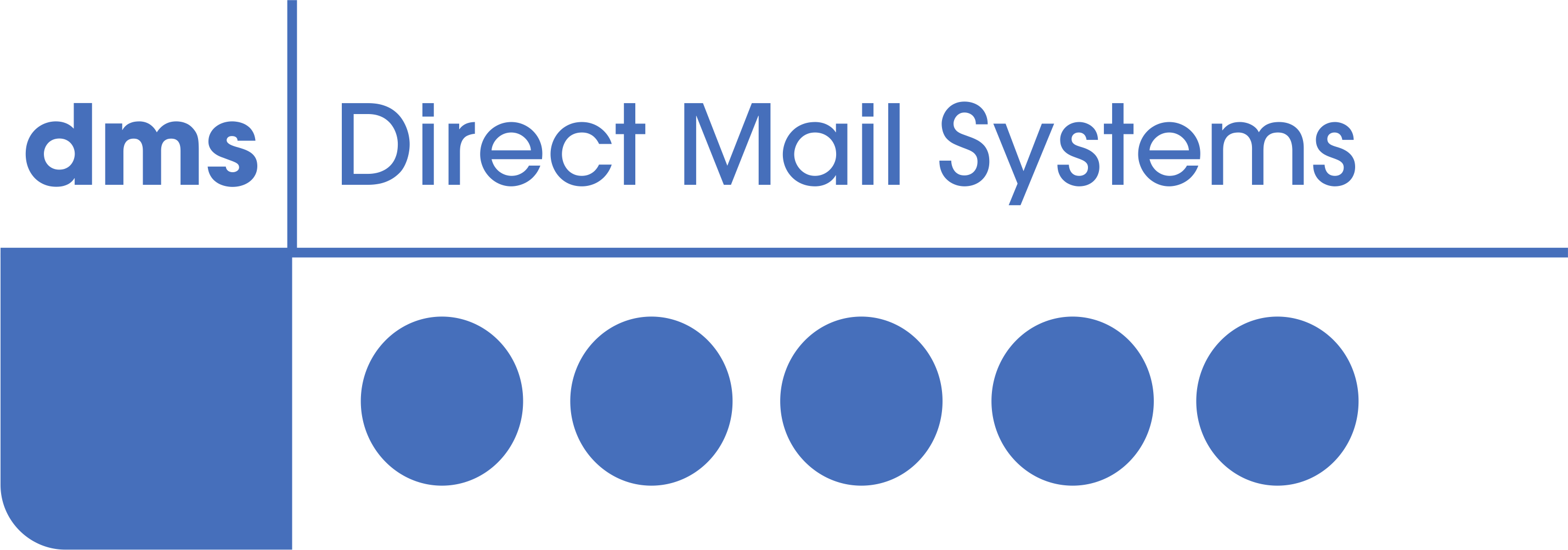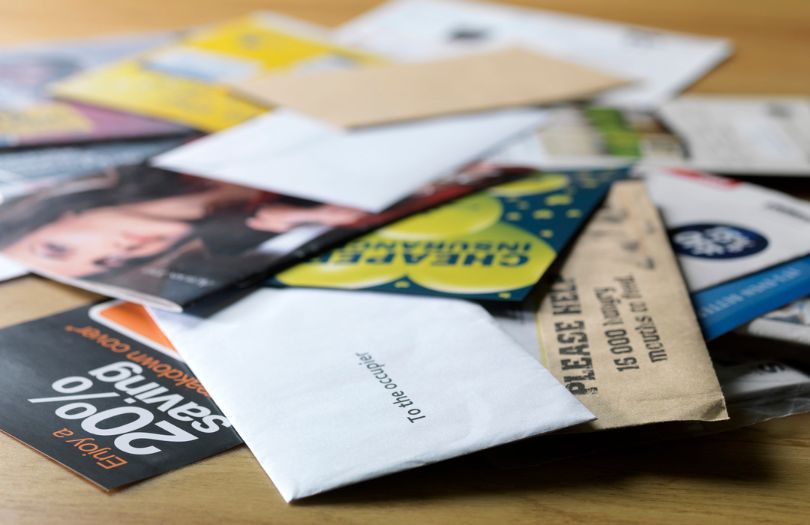In direct mail marketing, data quality is everything. From targeting the right audience to crafting personalised messages that convert, your campaign's success relies on the accuracy and integrity of your database. Over time, even the most well-maintained lists can become cluttered with duplicates, outdated addresses, and inaccurate information – all of which can impact your return on investment (ROI).
That’s where data hygiene steps in. In this article, we’ll explore what data hygiene means, why it matters for direct mail, and the best practices for keeping your data clean and campaign-ready. So, how clean is your data? Here are the best practices for data hygiene.
- What Is Data Hygiene?
- Why Clean Data Is Crucial in Direct Mail
- How to Spot Dirty Data
- Best Practices for Maintaining Clean Data
- How Often Should You Clean Your Data?
- GDPR and Data Hygiene
- Final Thoughts
- Let’s Clean Your Data and Optimise Your Campaign
What Is Data Hygiene?
Data hygiene is the process of cleaning, updating, and maintaining your customer data to ensure it’s accurate, current, and usable. It includes:
- Removing duplicate entries
- Correcting typos and formatting inconsistencies
- Updating changes like addresses or surnames
- Deleting outdated or unresponsive contacts
Clean data means better targeting, higher engagement, and lower waste, especially when dealing with physical mail where every error costs money in print and postage.
Why Clean Data Is Crucial in Direct Mail
Unlike digital campaigns, direct mail incurs real costs per contact, and poor data hygiene can directly eat into your budget and damage your brand's reputation. Here’s why keeping your data clean is essential:
1. Maximises Deliverability
Correct addresses ensure that your mail reaches the right people. Dirty data leads to undeliverable mail, wasted resources, and missed opportunities.
2. Enhances Personalisation
Accurate records let you personalise names, offers, and messages, which has been proven to boost open rates and response. Research also shows that personalised mail is 35% more likely to drive an actual purchase and is read and re-read 4.5 times on average.
3. Improves ROI
Clean data reduces mailing volume by removing errors and duplicates, making your budget go further.
4. Protects Your Brand Image
Sending a mailer to “Dear Sir or Madam” instead of a real name, or delivering it to the wrong address, can leave a poor impression.
How to Spot Dirty Data
Here are some common signs that your database needs a clean-up:
- High number of returned mail or address failures
- Multiple entries for the same individual
- Inconsistent data formatting (e.g. “High St” vs. “High Street”)
- Misspellings or incorrect postcodes
- Low campaign engagement or response rates
If any of these sound familiar, your data could be undermining your direct mail efforts.
Best Practices for Maintaining Clean Data
1. Use a Professional Data Cleaning Service
Instead of tackling data hygiene manually, consider using an expert service. At Direct Mail Systems, we offer a comprehensive data processing and cleaning service that helps businesses clean, deduplicate, format, and validate their mailing lists to Royal Mail standards.
This includes:
- De-duplication and suppression
- Postcode validation
- PAF (Postcode Address File) standardisation
- Royal Mail change of address checks (NCOA)
- Address formatting for optimal deliverability
Whether you’re using internal customer data or sourcing third-party lists, we make sure it’s campaign-ready, accurate, and compliant.
2. Validate Addresses Regularly
Validating addresses before every mail campaign ensures your data matches the latest Royal Mail records. This reduces undelivered items and ensures a smooth delivery process.
3. Deduplicate Your Records
Duplicates are more common than you think, especially when data comes from multiple sources. Our team uses advanced software to identify and remove duplicates based on names, addresses, emails, or phone numbers.
4. Standardise Data Formats
Consistency in how your data is structured helps reduce errors and improve automation. For example:
- Ensure consistent casing (“John Smith” vs. “john smith”)
- Use uniform abbreviations (“St” vs. “Street”)
- Standardise postcode formatting (“W1A 1AA” vs. “w1a1aa”)
These small fixes make a big difference at scale.
5. Update and Append Missing Data
If records are incomplete, we can help enrich your data with missing details, such as postcode lookups, missing titles, or standardised salutation fields.
6. Run Data Hygiene Checks Before Every Campaign
Dirty data is not a one-off problem, it's an ongoing risk and could be losing your money. Running hygiene checks regularly, or at least before each mailing, will keep your campaigns running efficiently.
How Often Should You Clean Your Data?
The frequency of data cleaning depends on how often your database changes, but a good rule of thumb is:
- Light cleansing before each mailing
- Quarterly hygiene reviews for active lists
- Full audits once or twice per year
If you collect data through multiple sources like websites, in-store, call centres or third-party lists, regular cleaning is even more important.
GDPR and Data Hygiene
Clean data isn’t just about marketing effectiveness, it’s also about compliance. Under the UK GDPR, businesses must ensure personal data is:
- Accurate and up to date
- Only retained as long as necessary
- Securely stored and managed
Failing to maintain clean data can expose you to fines and reputational damage. Our data processing service helps you stay compliant while improving campaign outcomes.
What’s the ROI of Clean Data?
Here’s what you can expect when you invest in regular data hygiene:
- Reduce wasted mail volume by 20–40%
- Improve campaign response rates by up to 35%
- Enhance your reputation with more accurate personalisation
- Achieve better campaign attribution and analytics
- Stay GDPR compliant with peace of mind
Clean data is more than a housekeeping task, it’s a critical ROI driver in direct mail.
Final Thoughts
Your direct mail campaign is only as strong as the data behind it. Outdated, inconsistent, or duplicate records can severely limit your results, and cost you money. By investing in proper data hygiene, you ensure that every mailer you send is efficient, accurate, and impactful.
At Direct Mail Systems, we take the hassle out of data cleaning. Our in-house data processing service helps you prepare clean, high-quality mailing lists ready for success. Whether you’re mailing to thousands or tens of thousands, we can help you deliver smarter, more targeted campaigns that drive results.
Let’s Clean Your Data and Optimise Your Campaign
Ready to give your data a health check? Whether you need full data cleansing or just a pre-campaign tidy-up, Direct Mail Systems is here to help. Our expert team will make sure your list is clean, compliant, and campaign-ready.
Get in touch with us today to learn more about our data hygiene and direct mail services.




